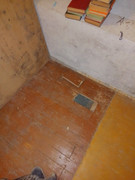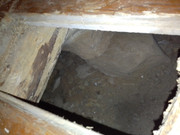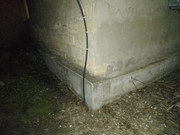





Timothy Norton wrote:I believe internal parasites might be an issue as well. Worms and such can cause symptoms that can appear as issues with the nervous system such as the stumbling and issues walking.

Robin Katz wrote:It's likely the cat has more wrong than ear mites, although mites can get really bad and need to be treated asap. She really should see a vet to get checked and treated for parasites, which is also very likely. Cats usually recover really well once the underlying problems are treated. I'm all for home remedies, but when the situation is severe enough, I get to a vet and use stronger treatments so the cat gets better quickly. The language barrier is difficult, but the vet should be able to do an exam and give you medication without detailed information from you. They do it all the time in shelters.
We have always had rescue/feral cats and they can learn to get along, but it takes time. Right now we have two male ex-feral cats that took us over a year to get to trust us. Now they snuggle with us and are wonderful cats. We also have another rescue cat that hates all other animals and it took a while to get across to all of them that the aggressor gets yelled at for being a butt-head. Right now she is sleeping 1 foot from one of the ex-ferals. Time and patience and a lot of love is the key. I wish you and your cats the best.



Glenn Herbert wrote:The spaced-out bricks to hold the mass up off the slab are a good plan, but you do not want to totally fill the spaces with insulation (an inch or so would be fine.) Insulation does not stop heat flow, it slows it down, and without freely moving air, heat will build up over time. This is unlikely to actually damage concrete in a residential-scale application, but a wood floor could be overheated and eventually char and catch fire. Circulating air in the spaces will let the heat get out to the room where it will be useful.
For an RMH with a tall narrow bell, I would want to know that the slab was thick or reinforced or both. Failing that, I would pour a reinforced slab on top of the original one with enough area to spread out the load over the total bell footprint or more, depending on the circumstances. A bench-style bell will spread the load enough that I wouldn't worry about it.


Cristobal Cristo wrote:
This would make a proper foundation for building a quality heater. On this slab you can build canals from bricks laid on stretchers and fill them with perlite or crushed glass. On them you would lay bricks and that would be your base for building.

Matt McSpadden wrote:Hi M,
I don't think copper pipe in cement would be a good mix.
I can think of two ways to do this. The most common way is to embed pex pipe in the cement floor and pump hot water through it. This can be achieved with a lot of different equipment, and should be possible using water heated with a RMH, but I think to do it safely you are going to need quite a bit of other equipment like pumps and relief valves and whatnot.
Another possibility is to dig down deeper, so that the chimney goes through the floor instead of a bench. Essentially just dropping the whole thing lower than normal. I have seen one guy experimenting with this in his garage. He seemed to think it worked ok.

Peter van den Berg wrote:
Most of the material on the batchrocket site has been written in 2016/2017/2018. There has been more recent updates, those are mentioned here and there on the site. Development has been going on through the years, latest additions are the double shoebox designs, the latest one (#3) isn't on the site yet. I am busy with development of a compact batchrocket core at the moment, results are looking good but no firm final design in sight as of now.




thomas rubino wrote:.
Are you aware of the newest design RMH? A hollow bell to hold your heat rather than a heavy piped mass?
And then there are Batchbox RMHs that burn longer and produce more heat than a J-Tube design.
There have been many improvements and changes in the last few years.

thomas rubino wrote:.
Hi M;
I will try to answer your questions.
#1) Some RMHs and mass can weigh in around #4000. If this load is spread over many floor joists it may be ok, but a qualified builder should be consulted.
It sounds like your home is one story with no crawl space. If the ground is close by, then removing a wooden floor and pouring an insulated slab is a better safer alternative.
#2) No concrete on top of the wood floor, that is just asking for problems in the future.
#3) Only someone qualified on-site can determine if you can remove a section of the wall.
As Fox mentioned, a new support must bridge the gap.
#4) It is possible to exit a wall but not recommended. An insulated metal chimney must be installed beyond the roof peak to maintain a good draft.
A vertical chimney through the house will stay warm and draw properly.
From your photos, it appears that you want a traditional J-Tube RMH with a piped mass.
Are you aware of the newest design RMH? A hollow bell to hold your heat rather than a heavy piped mass?
And then there are Batchbox RMHs that burn longer and produce more heat than a J-Tube design.
There have been many improvements and changes in the last few years.
Check out some of the posts in the RMH forum and read all about the newest inovations.